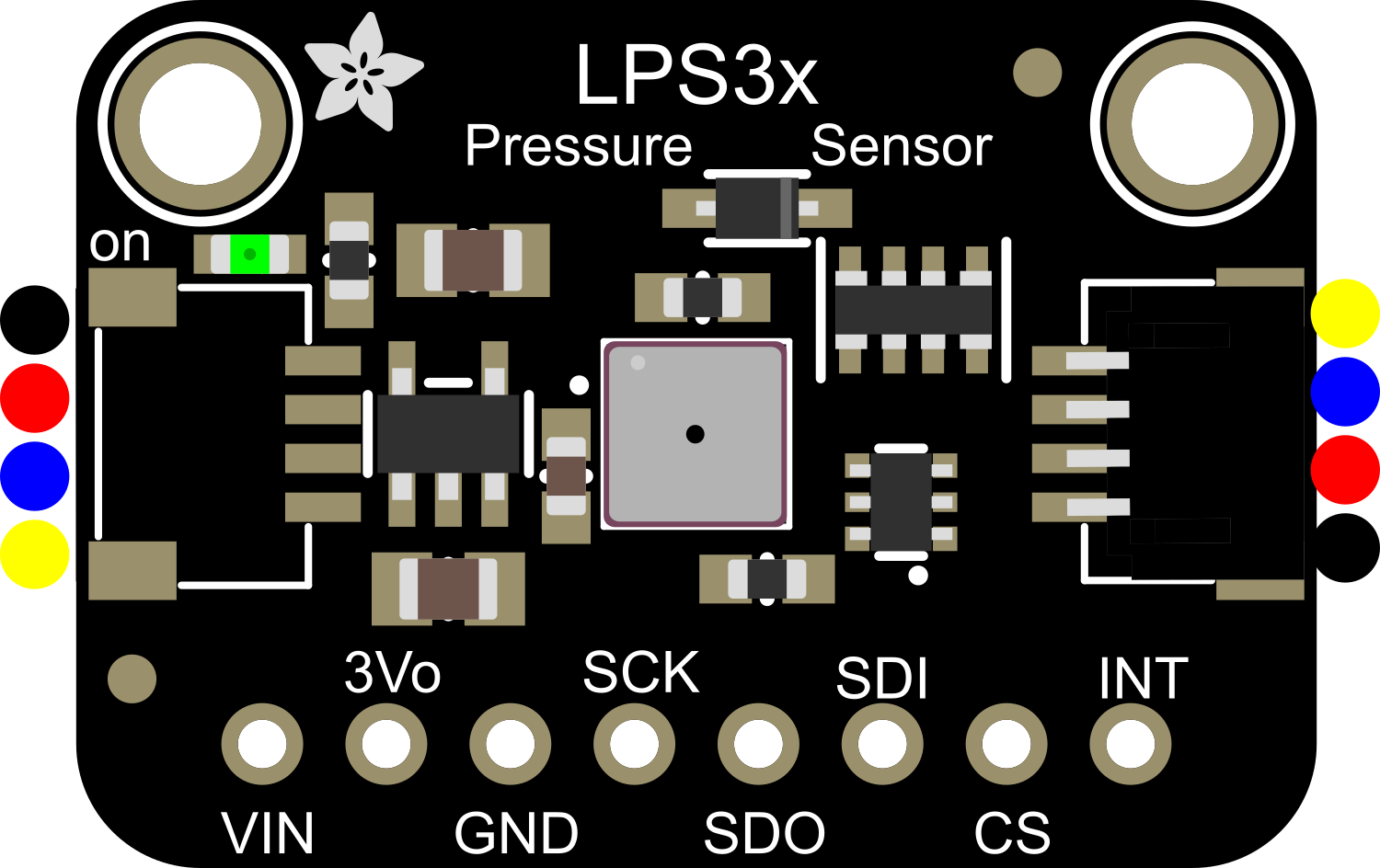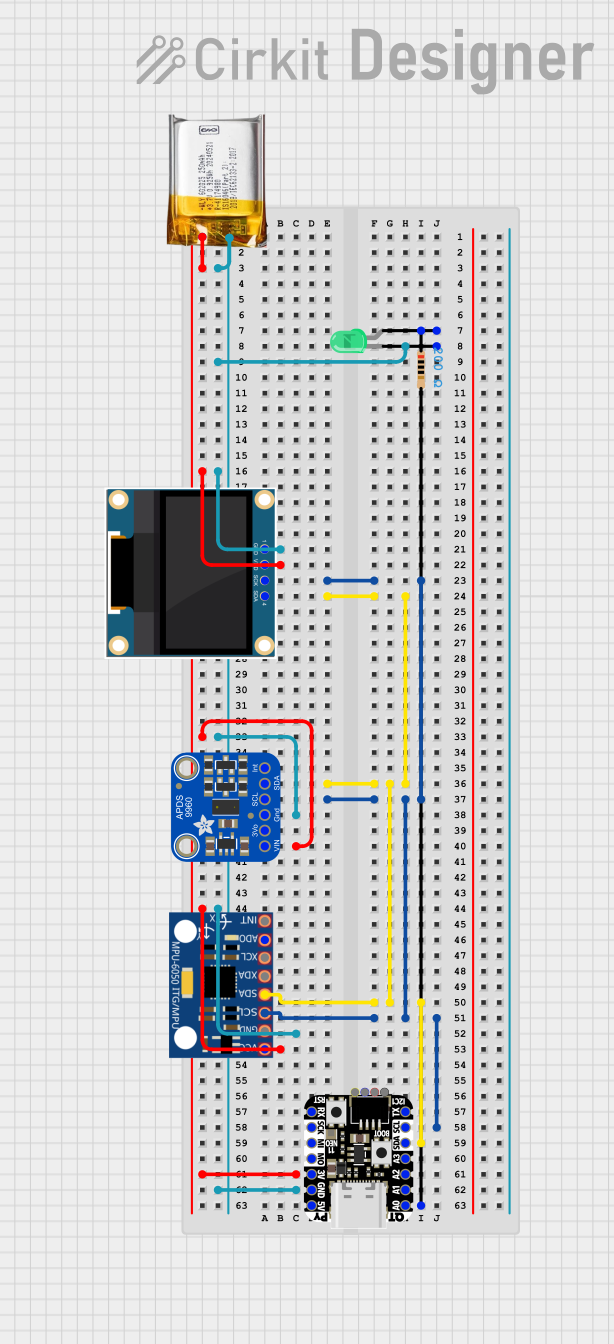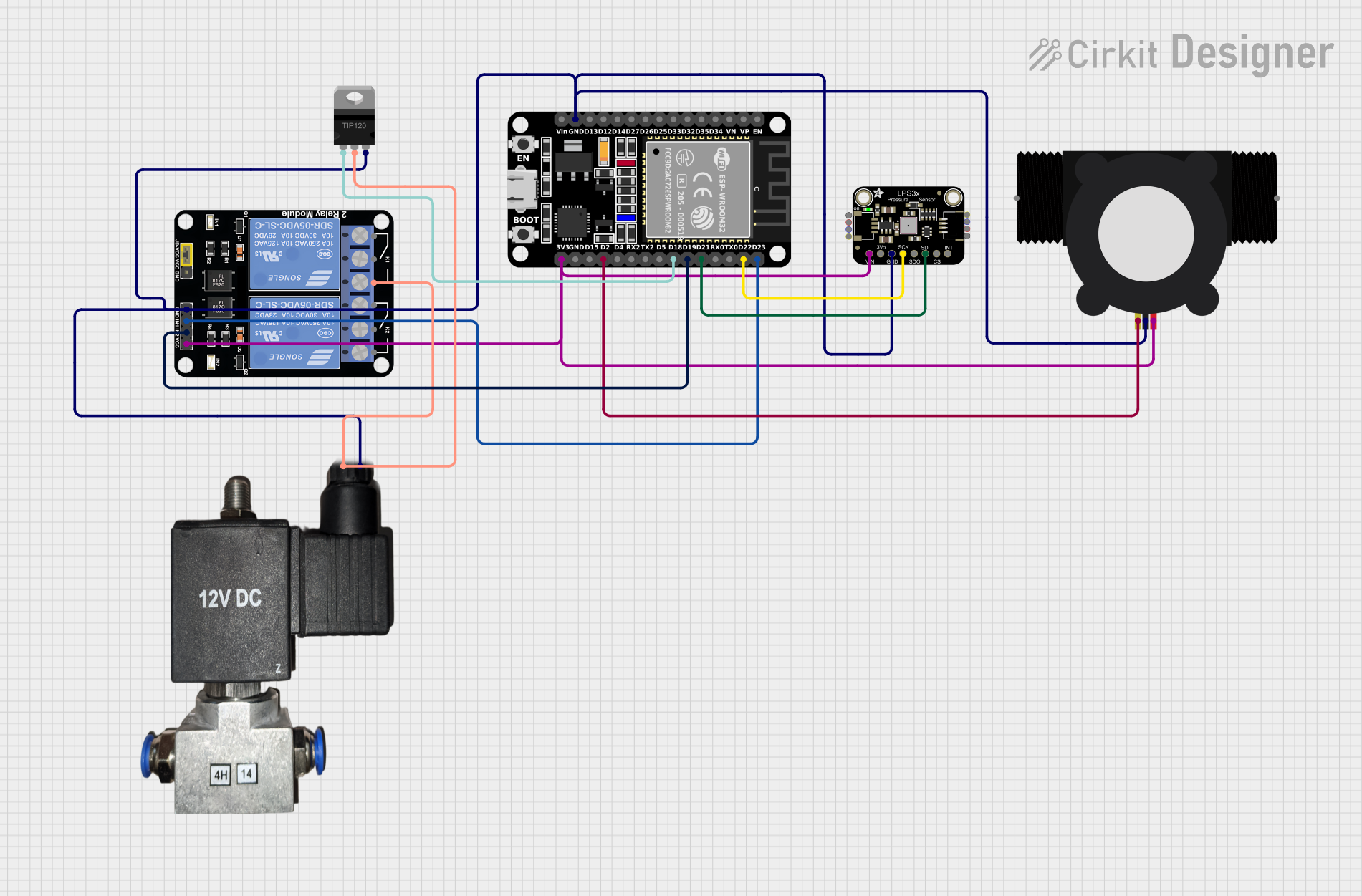
How to Use Adafruit LPS3X: Examples, Pinouts, and Specs

 Design with Adafruit LPS3X in Cirkit Designer
Design with Adafruit LPS3X in Cirkit DesignerIntroduction
The Adafruit LPS3X is a sophisticated pressure sensor module that offers high-precision atmospheric pressure measurements. This sensor is ideal for a wide range of applications, including weather monitoring, altitude sensing for drones or hiking equipment, and any other project that requires accurate barometric readings. Its small form factor and low power consumption make it suitable for portable devices.
Explore Projects Built with Adafruit LPS3X

 Open Project in Cirkit Designer
Open Project in Cirkit Designer
 Open Project in Cirkit Designer
Open Project in Cirkit Designer
 Open Project in Cirkit Designer
Open Project in Cirkit Designer
 Open Project in Cirkit Designer
Open Project in Cirkit DesignerExplore Projects Built with Adafruit LPS3X

 Open Project in Cirkit Designer
Open Project in Cirkit Designer
 Open Project in Cirkit Designer
Open Project in Cirkit Designer
 Open Project in Cirkit Designer
Open Project in Cirkit Designer
 Open Project in Cirkit Designer
Open Project in Cirkit DesignerTechnical Specifications
Key Features
- Pressure Range: 260 to 1260 hPa
- High-resolution output: up to 0.1 Pa
- Low power consumption
- I2C interface for easy communication with microcontrollers
- Embedded temperature compensation
- Supply Voltage: 1.7V to 3.6V
Pin Configuration
| Pin Number | Name | Description |
|---|---|---|
| 1 | VDD | Power supply (1.7V to 3.6V) |
| 2 | GND | Ground connection |
| 3 | SDA | I2C Data line |
| 4 | SCL | I2C Clock line |
| 5 | SA0 | I2C Address selection pin |
| 6 | SD0 | SPI Data output (not used in I2C mode) |
| 7 | SPC | SPI Clock (not used in I2C mode) |
| 8 | CS | SPI Chip select (not used in I2C mode) |
Usage Instructions
Interfacing with Arduino
To use the Adafruit LPS3X with an Arduino UNO, follow these steps:
Connect the sensor to the Arduino:
- VDD to 3.3V
- GND to GND
- SDA to A4 (SDA)
- SCL to A5 (SCL)
- SA0 can be left unconnected or connected to GND/VDD to change the I2C address if multiple sensors are used.
Install the Adafruit LPS3X library via the Arduino Library Manager or download it from the Adafruit GitHub repository.
Open the example sketch provided with the library to begin reading pressure and temperature data.
Sample Arduino Code
#include <Wire.h>
#include <Adafruit_LPS35HW.h>
Adafruit_LPS35HW lps; // Create an instance of the LPS3X class
void setup() {
Serial.begin(9600);
while (!Serial) { delay(10); } // Wait for serial console to open
Serial.println("LPS3X test!");
if (!lps.begin_I2C()) { // Initialize the sensor
Serial.println("Failed to find LPS3X chip");
while (1) { delay(10); }
}
Serial.println("LPS3X Found!");
}
void loop() {
Serial.print("Pressure: ");
Serial.print(lps.readPressure()); // Read pressure
Serial.println(" hPa");
Serial.print("Temperature: ");
Serial.print(lps.readTemperature()); // Read temperature
Serial.println(" C");
delay(500); // Wait half a second between readings
}
Important Considerations and Best Practices
- Ensure that the power supply voltage does not exceed the maximum rating of 3.6V.
- Use pull-up resistors on the I2C lines if they are not already present on the microcontroller board.
- Avoid physical stress and exposure to chemicals that could damage the sensor.
- For accurate readings, allow the sensor to acclimate to the environment before taking measurements.
Troubleshooting and FAQs
Common Issues
- Sensor not detected: Check wiring, ensure correct power supply, and verify that the I2C address is correct.
- Inaccurate readings: Ensure the sensor has had time to acclimate to the environment. Check for sources of interference or physical obstructions.
FAQs
Q: Can the sensor measure liquid pressure? A: No, the LPS3X is designed for atmospheric pressure measurements only.
Q: What is the operating temperature range of the sensor? A: The operating temperature range is typically from -40°C to +85°C.
Q: How can I calibrate the sensor? A: The sensor comes factory-calibrated, but you can perform software-based calibration using known reference values if necessary.
For further assistance, consult the Adafruit support forums or the detailed datasheet for the LPS3X sensor.